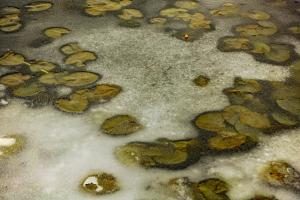 People like you and me are now bombarded with frightening stories about “toxic” or “killer” mold and mildew. We are told that we will get sick and be forced from our homes. And, it has become big business too. Recently, we received an ad-fax from a cleaning company with headlines, “Government health agencies do no tolerate mold anywhere within a dwelling.” Statements like this are intended to scare and alarm. To the contrary, because of variation of individual susceptibility to mold, the Environmental Protection Agency (EPA) and Centers for Disease Control (CDC) have not yet established action levels for mold and mildew.
People like you and me are now bombarded with frightening stories about “toxic” or “killer” mold and mildew. We are told that we will get sick and be forced from our homes. And, it has become big business too. Recently, we received an ad-fax from a cleaning company with headlines, “Government health agencies do no tolerate mold anywhere within a dwelling.” Statements like this are intended to scare and alarm. To the contrary, because of variation of individual susceptibility to mold, the Environmental Protection Agency (EPA) and Centers for Disease Control (CDC) have not yet established action levels for mold and mildew.
The engineers at Criterium-Turner Engineers spend more time in nasty, moldy crawl spaces and attics each week than most people will in a lifetime, with no ill effects. Yet, some individuals will experience health problems even when there are no obvious mold and mildew conditions. This extreme variation in individual susceptibility will continue to make it difficult to quantify action levels for mold and mildew. It’s time that we all look at mold and mildew from a different perspective. It’s time to befriend mold and mildew as a marker of moisture problems.
During a recent pre-purchase home inspection, our client said that she was having problems breathing. We were in the basement. There was some residue on the walls of this basement which appeared to be mold or mildew. Accepting her discomfort, we indicated that we would continue the inspection and join her upstairs shortly. About then, the real estate agents came downstairs. At this point, we were able to show that the wood framing and even the foundation walls measured “dry” using a non-probing moisture meter. We explained that mold and mildew require four ingredients to survive:
1. Air (ubiquitous, thankfully, here on earth)
2. Moderate temperatures (normal in the places in which we live)
3. Food source such as wood, carpet, drywall, furniture, belongings (virtually ubiquitous)
4. Moisture (very variable)
Of the four ingredients, moisture is the only one that we can readily control. We explained this to our client and could see the relief when we explained that when you take away the moisture, mold and mildew can no longer survive. It is analogous to snuffing a fire by taking away the oxygen. The soot and char may remain, but the fire is dead. Twenty minutes later, they were all still talking in the basement. The client did not mention her concerns about mold again. A little education can provide amazing changes in attitude. While, no doubt the physical reaction for some is real and serious. For some though, the reaction of is simply perceived and can be cured by a placebo.
So, how do you know if you have a moisture problem? Mold and mildew are our friends because they are warning signs that we are not properly controlling moisture levels. Mold and mildew growth tell us that if we don’t take action, fungi and more aggressive and destructive organisms will take up residence in our residence and cause more serious damage.
Beware the company that wants to “treat” your mold and mildew. Unless you have received professional guidance regarding the cause of moisture problems, you will be applying the classic Band-Aid. Many of these companies guarantee that mold and mildew will not return – yet if they do not eliminate the conditions causing mold and mildew – moisture, you can bet that the mold and mildew will be back. Determine and solve the cause before you treat the symptom.
Lots of “professionals” in the property management industry do not fully understand the mold and mildew issue either. A recent evaluation of a mold and mildew condition in the crawl space of one of a large condominium association in New Hampshire revealed mold/mildew residue on structural members. The homeowner had been advised by the management company to get it treated. The primary problem however was dry rot in the framing. The moisture and ventilation problem had been solved many years prior by the proper application of a plastic vapor barrier on the crawl space dirt floor and extension of the dryer duct to the exterior. Because the wood moisture content was 10% or below, the mold and mildew were no longer thriving. The only basis for treatment of the mold and mildew would be to aid in the monitoring of future moisture problems.
In conclusion, when you don’t feel well, you call your doctor – a licensed medical professional. When your home or building doesn’t feel well (or doesn’t look well), call your licensed engineering professional and get a check-up, diagnosis and recommendation/repair.
